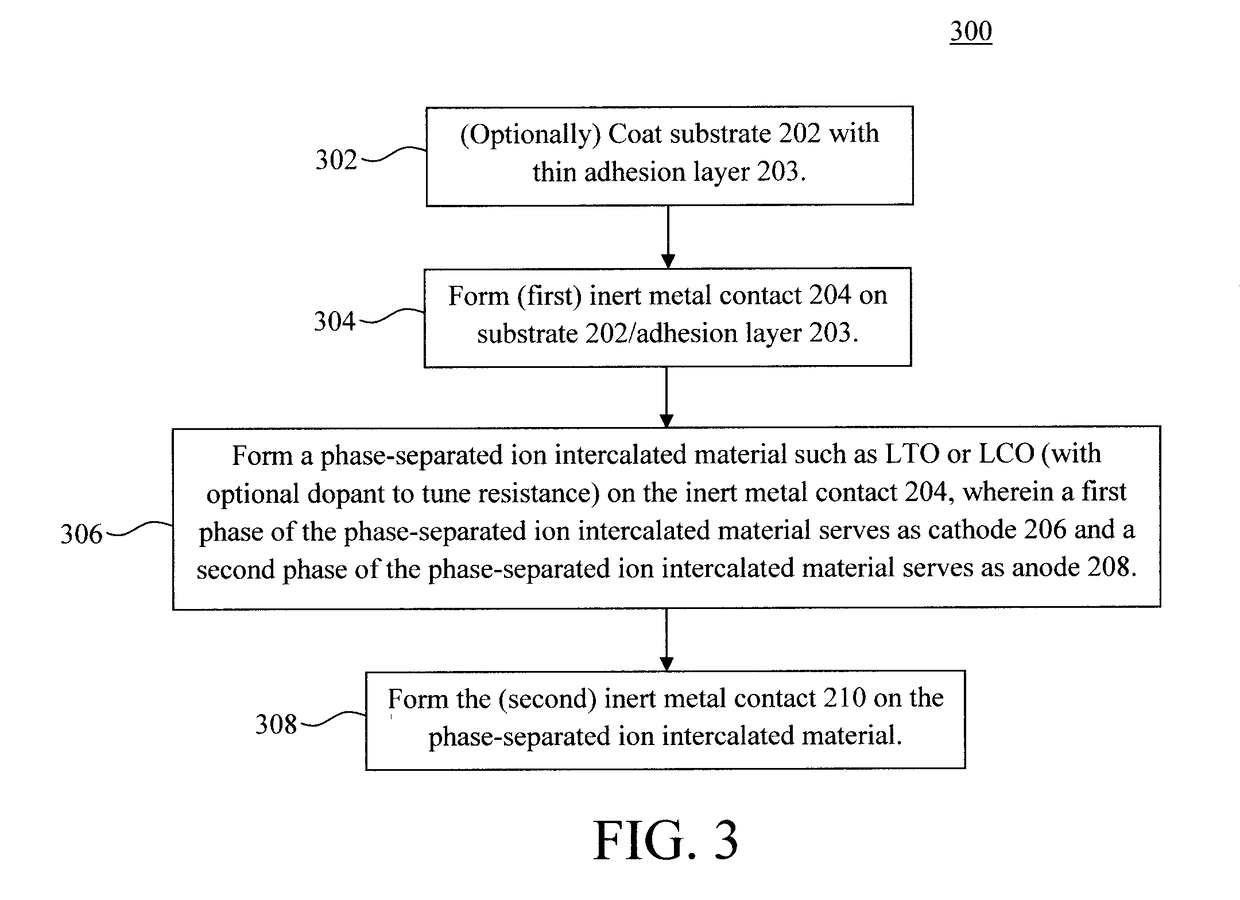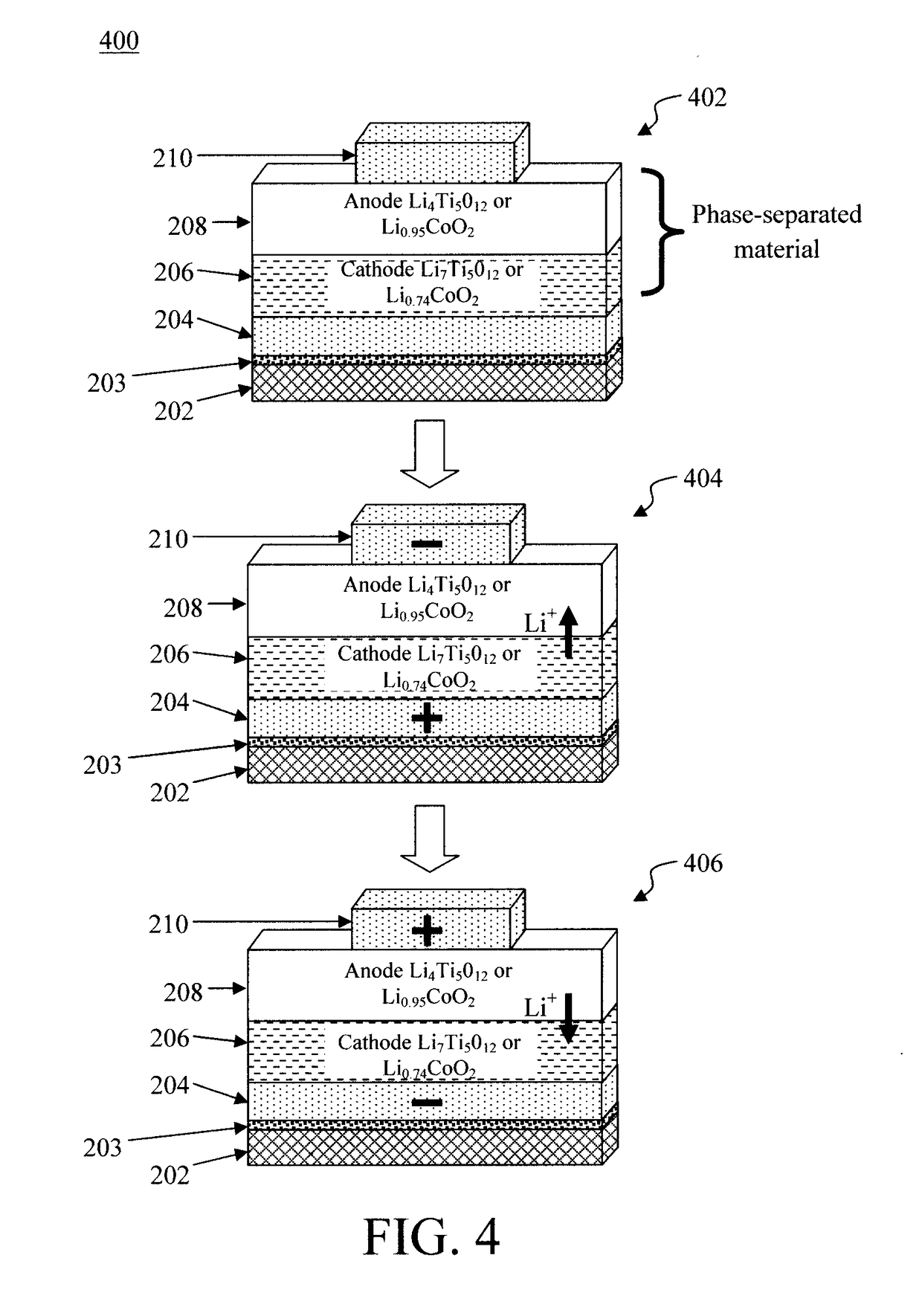Memristive Device Based on Reversible Intercalated Ion Transfer Between Two Meta-Stable Phases
a memristive and meta-stable technology, applied in the field of memristive devices, can solve the problems of nanoionic memristor devices, which do not show symmetric modulation between stored resistance states,
- Summary
- Abstract
- Description
- Claims
- Application Information
AI Technical Summary
Benefits of technology
Problems solved by technology
Method used
Image
Examples
Embodiment Construction
[0019]Provided herein is a bipolar, analog memristive device that enables symmetric switching between a multitude of resistance states. As provided above, device resistance must be symmetrically modulated, e.g., when provided n positive pulses, n negative pulses returns the device to the same resistance. Current nanoionics (e.g., RRAM, CBRAM, etc.) do not show symmetric modulation of resistance due to their principles of operation, which consist of forming and breaking a conductive filament of material within the device. See, for example, FIGS. 1A and 1B which illustrate asymmetric and symmetric modulation of resistance, respectively, as a function of pulse number (#). Further, as shown in the two examples presented in FIG. 1B, the potentiation / depotentiation paths do not have to be linear (i.e., one path shown in FIG. 1B is linear and the other is not), however they need to be symmetric.
[0020]In order to achieve symmetric modulation between resistance states, an alternative to fila...
PUM
 Login to View More
Login to View More Abstract
Description
Claims
Application Information
 Login to View More
Login to View More - R&D
- Intellectual Property
- Life Sciences
- Materials
- Tech Scout
- Unparalleled Data Quality
- Higher Quality Content
- 60% Fewer Hallucinations
Browse by: Latest US Patents, China's latest patents, Technical Efficacy Thesaurus, Application Domain, Technology Topic, Popular Technical Reports.
© 2025 PatSnap. All rights reserved.Legal|Privacy policy|Modern Slavery Act Transparency Statement|Sitemap|About US| Contact US: help@patsnap.com



